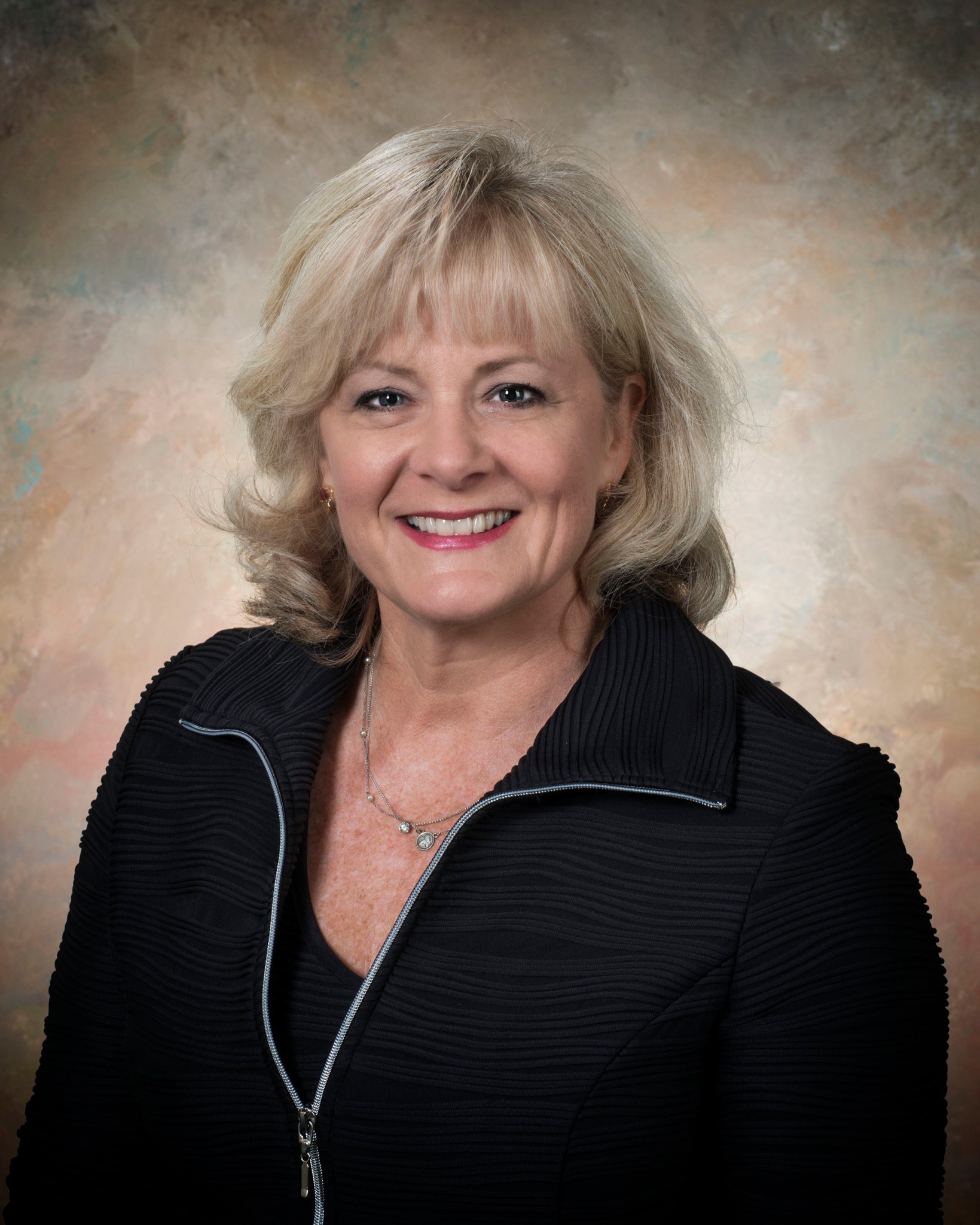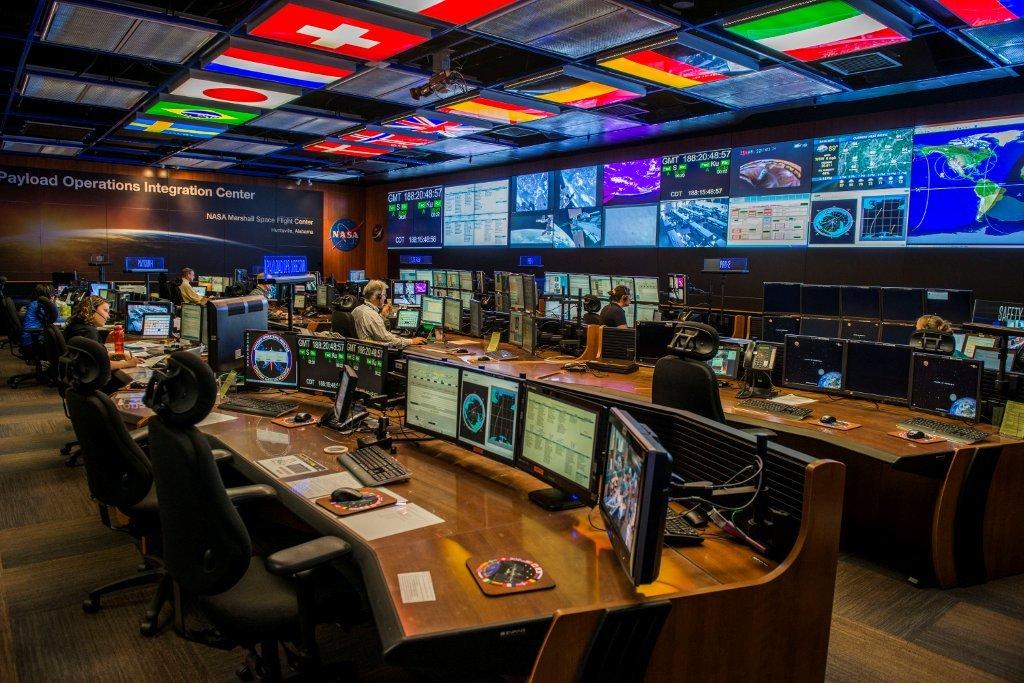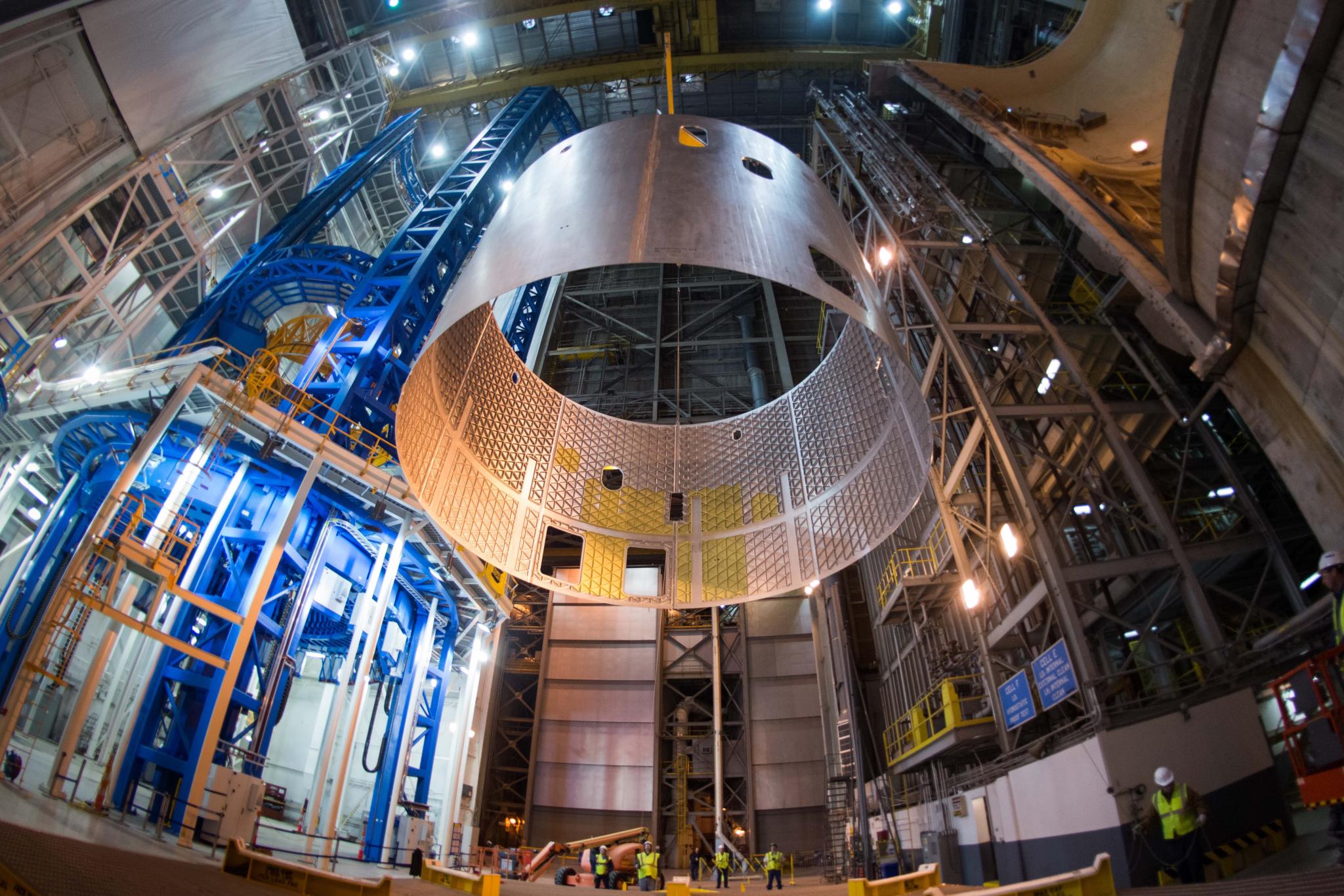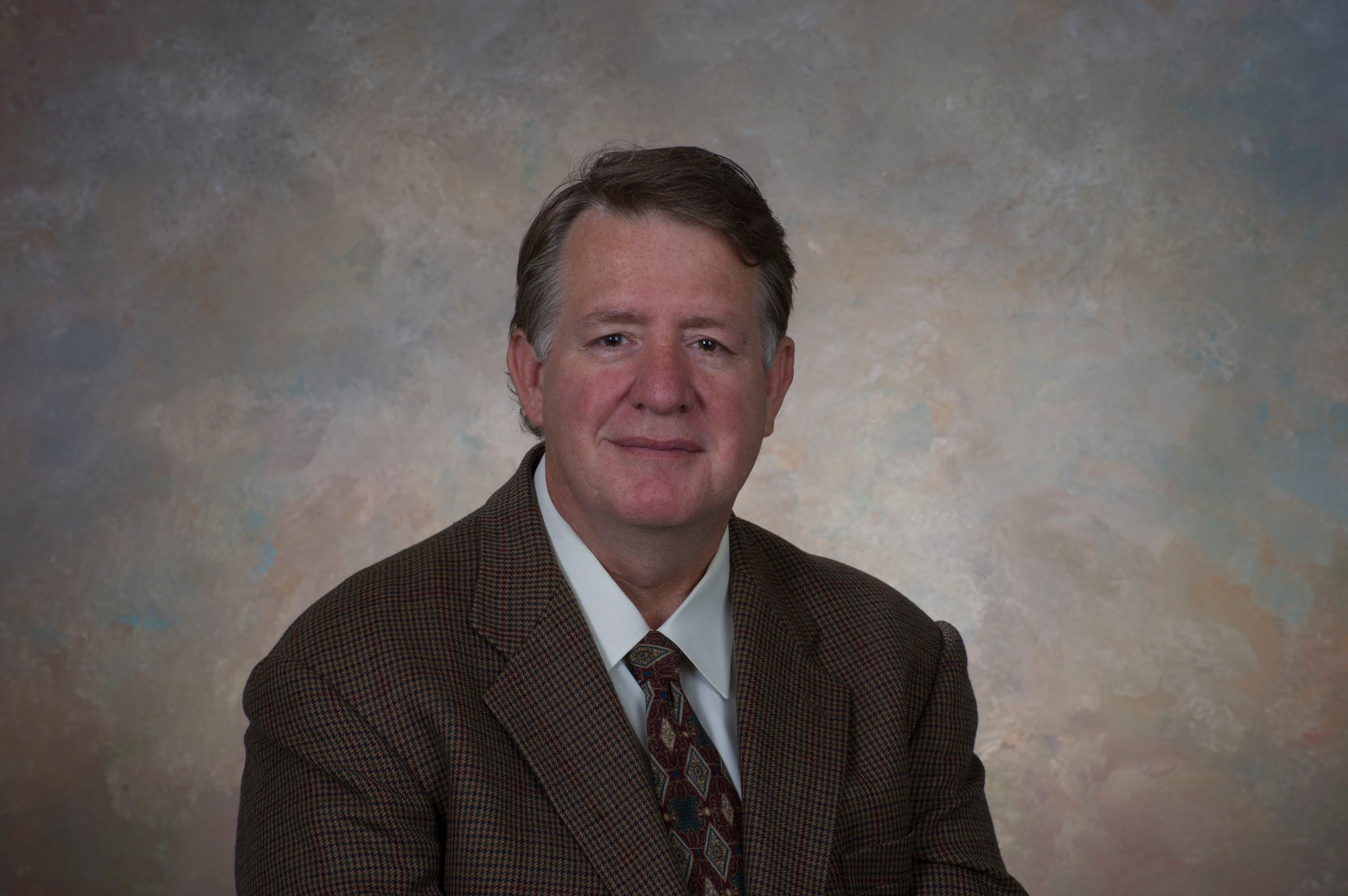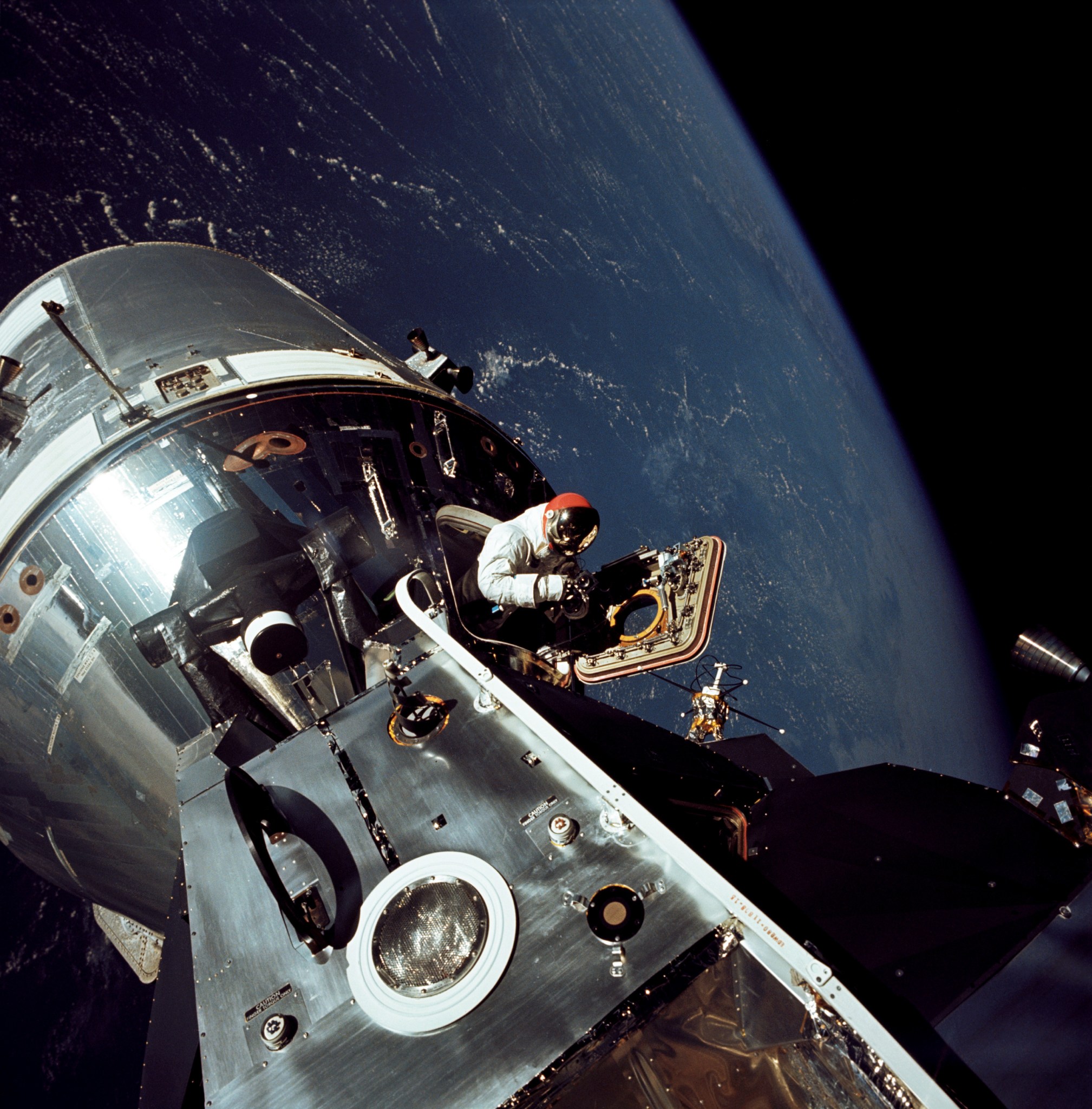In This Week’s Star
- Jody Singer Named Deputy Director of Marshall Space Flight Center
- NASA Astronaut Scott Kelly Returns Safely to Earth After One-Year Mission
- NASA’s Science Command Post at Marshall Supports Scott Kelly’s Year In Space
- Tools and Talent at Michoud to Complete SLS Core Stage Welding in 2016
- Preston Jones Named Engineering Director of Marshall Center
- NASA Flight Controllers to Celebrate 15th Anniversary of Space Station Support with Online Streaming Event
- Former Shuttle Program Manager Leads Shared Experiences Discussion
- NASA @ Work Challenges Employees to Creatively Solve Tough Problems
- This Week in NASA History: Apollo 9 Astronauts Perform First Crewed Flight of Lunar Module — March 3, 1969
Jody Singer Named Deputy Director of Marshall Space Flight Center
Joan A. “Jody” Singer has been appointed deputy director of NASA’s Marshall Space Flight Center by Director Todd May.
Singer will assist May in managing one of NASA’s largest field installations, with nearly 6,000 civil service and contractor personnel, an annual budget of approximately $2.5 billion and a broad spectrum of human spaceflight, science and technology development missions contributing to the nation’s space program. Those include the Space Launch System — the most powerful rocket ever built, able to carry astronauts in NASA’s Orion spacecraft on deep space missions, including to an asteroid and ultimately to Mars.
“Jody has tremendous depth of management experience with SLS, space shuttle and other programs, keen leadership skills and a proven ability to build partnerships — all vital to the tremendous team effort required to reach our space exploration goals and destinations,” May said. “I feel proud and fortunate to be able to call on her to serve as Marshall’s deputy director.”
Over a more than 30-year career with NASA, Singer has held leadership positions in a variety of engineering, propulsion and spaceflight development programs. She had since June 2013 been manager of the Flight Programs and Partnerships Office at Marshall, where she held primary responsibility for the center’s work with human exploration projects, flight mission programs and International Space Station hardware integration and operations, including life support systems, research facilities, and payload integration and operations. The office also develops and maintains partnerships with other government agencies and international and commercial partners that will help achieve NASA’s vision.
Prior to that, Singer was appointed deputy program manager of SLS in August 2011. She was deputy manager of the Space Shuttle Propulsion Office at Marshall from 2007 to 2011, helping lead the organization responsible for manufacturing, assembling and operating the space shuttle main engines, external tank and solid rocket boosters. In 2010, she assumed additional responsibilities as deputy for the Ares Project Office. In this dual leadership capacity, Singer helped ensure the successful conclusion of the Space Shuttle Program in 2011 and the transition of the workforce and assets to support the work of NASA and its partners for the development of SLS.
She was manager of the Reusable Solid Rocket Booster Project Office from 2002 to 2007, supervising NASA and contractor engineers and technicians responsible for the flight safety, performance and hardware integrity of the space shuttle reusable booster hardware. She also was responsible for ensuring safety through the critical ground test program and led the team through Return to Flight activities after the Columbia accident.
She was named assistant manager of the Shuttle Projects Office in 2000. In 2002, after being appointed to the Senior Executive Service — the personnel system covering top managerial positions in federal agencies — she was named the office’s deputy manager.
From 1990 to 2000, Singer served in progressively responsible positions in the External Tank Project Office, including business manager, assistant manager and deputy manager. Prior to that, from 1986 to 1990, she was an engineer in the Space Shuttle Main Engine Project Office. She joined NASA in 1985 as an engineer in the professional intern program.
Singer, a native of Hartselle, Alabama, earned a bachelor’s degree in industrial engineering from the University of Alabama in Tuscaloosa in 1983. She has completed many executive- and management-level training courses, received two NASA Fellowships and has been recognized with many awards during her NASA career, including the Presidential Rank of Meritorious Executive Award — the highest honor for career federal employees — in 2007; NASA Outstanding Leadership Medals in 2011 and 2002; and the NASA Exceptional Service Medal in 1993.
For her dedication and commitment to excellence and achievement in support of the human space program, she was awarded the Silver Snoopy Award by the NASA astronaut corps in 2011, and was named a Space Flight Awareness Launch Honoree in 1991.
Singer and her husband, Christopher Singer, live in Huntsville. They have three children.
NASA Astronaut Scott Kelly Returns Safely to Earth After One-Year Mission
NASA astronaut and Expedition 46 Commander Scott Kelly and his Russian counterpart Mikhail Kornienko completed their historic 340-day mission aboard the International Space Station when they landed in Kazakhstan at 10:26 p.m. March 1.
Joining their return trip aboard a Soyuz TMA-18M spacecraft was Sergey Volkov, also of the Russian space agency Roscosmos, who arrived on the station Sept. 4, 2015. The crew touched down southeast of the remote town of Dzhezkazgan.
“Scott Kelly’s one-year mission aboard the International Space Station has helped to advance deep space exploration and America’s journey to Mars,” said NASA Administrator Charles Bolden. “Scott has become the first American astronaut to spend a year in space, and in so doing, helped us take one giant leap toward putting boots on Mars.”
Dozens of people at NASA’s Marshall Space Flight Center contributed to the success of Kelly’s mission. Flight controllers at Marshall’s Payload Operations Integration Center worked around the clock with space station crew members and scientists worldwide. The science command post for the orbiting laboratory manages and guides all station investigations by coordinating experiments in space with project scientists on Earth.
During the record-setting One-Year mission, the station crew conducted almost 400 investigations to advance NASA’s mission and benefit all of humanity. Kelly and Kornienko specifically participated in a number of studies to inform NASA’s journey to Mars, including research into how the human body adjusts to weightlessness, isolation, radiation and the stress of long-duration spaceflight. Kelly’s identical twin brother, former NASA astronaut Mark Kelly, participated in parallel twin studies on Earth to help scientists compare the effects of space on the body and mind down to the cellular level.
Kelly ventured outside the confines of the space station for three spacewalks during his mission. The first included a variety of station upgrade and maintenance tasks, including routing cables to prepare for new docking ports for U.S. commercial crew spacecraft. On a second spacewalk, he assisted in the successful reconfiguration of an ammonia cooling system and restoration of the station to full solar power-generating capability. The third spacewalk was to restore functionality to the station’s Mobile Transporter system.
Including crewmate Gennady Padalka, with whom Kelly and Kornienko launched on March 27, 2015, 10 astronauts and cosmonauts representing six different nations — the United States, Russia, Japan, Denmark, Kazakhstan and England — lived aboard the space station during the yearlong mission.
With the end of this mission, Kelly now has spent 520 days in space, the most among U.S. astronauts. Kornienko has accumulated 516 days across two flights, and Volkov has 548 days on three flights.
For more information on this about the one-year mission, click here.
For more information about the International Space Station and its crews, click here.
NASA’s Science Command Post at Marshall Supports Scott Kelly’s Year In Space
By Bill Hubscher
Astronauts conduct science on the International Space Station to bring benefits home to Earth and prepare the world for space missions. Space travelers usually spend about six months on the world’s most sophisticated orbiting laboratory.
When people explore Mars or travel even farther away, the journey will take much longer. That’s why NASA astronaut Scott Kelly and Russian cosmonaut Mikhail Kornienko of Roscosmos have spent a year in space. Flight controllers at the space station science command post — the Payload Operations Integration Center at NASA’s Marshall Space Flight Center — have worked with Kelly and various crew members to complete almost 400 experiments since Kelly arrived at the station on March 27, 2015. Kelly’s year in space is providing crucial knowledge needed to send humans safely to deep space on upcoming Space Launch System and Orion missions and for the journey to Mars on missions 30 months or longer.
Kelly — who spent more time in space on a single mission than any American astronaut — and Kornienko conducted studies and endured a battery of biomedical tests to determine what happens to the human body while spending an extended period in space. Marshall flight controllers worked around the clock with Kelly and Kornienko as they orbited Earth 5,440 times traveling 143,846,525 miles.
In many respects, this yearlong expedition was just another day at the office for Becky Grimaldi, one of the payload operations directors who help manage and guide the ground-based support team.
“We meticulously plan all space station experiments,” said Grimaldi. “So we treated that part of the process the same. There is a learning curve for any crew, and Kelly and Kornienko just got better at doing things, becoming more proficient at various tasks as time passed. This was beneficial.”
Even while Kelly and the crew were sleeping, science continued as Marshall’s “science central” team operated and monitored experiments remotely. Before the flight, they helped plan and schedule experiments and collaborated with researchers around the world as they prepared new investigations for flight. Some even came to Marshall to test experiments inside ground-based science racks, gloveboxes and other research facilities identical to those in space. Marshall built and manages many of these science facilities and the space station’s life support system. Demonstrating and advancing life support systems on the space station is also important for sending humans to Mars.
During the mission, payload communicators get to know station residents quite well while they talk to the crew almost every day, relaying information from investigators and flight controllers. As one of those communicators, Chrissy Stinson said working with an individual astronaut serves as a reminder of how crew members also serve as human test subjects on the station.
“From the individual experiments, to the samples they collect and the various protocols, it’s pretty remarkable,” said Stinson. “Sometimes you can forget what a unique environment they are in because we work with it every day. When I stop to think about all the things they are accomplishing, it’s truly amazing.”
One investigation sent back stunning science videos and images of Earth from a new Ultra-High Definition, or 4K camera, that Kelly and his crewmates were the first to use. One of the more difficult human research investigations measured fluid shifts and is critical to the journey to Mars.
“I am proud of successfully completing the Fluid Shifts investigation,” said Grimaldi. “It involved coordination between NASA, the European Space Agency and our Russian counterparts. Understanding how vision is influenced by fluids moving inside the body is crucial to human spaceflight as is international cooperation on investigations and missions.”
Despite not leaving Earth, the personnel in the Payload Operations Integration Center are a valuable part of the team.
“It has been an honor to be a part of this experience,” said Samantha Harris, another payload communicator who worked on the expedition. “We completed so much valuable science, and while we know it will take time for data to be analyzed and understood, we’re looking forward to some of the new discoveries as a result of the data Scott Kelly and his Russian partner collected.”
Hubscher, an ASRC Federal/Analytical Services employee, supports the Office of Strategic Analysis & Communications.
Tools and Talent at Michoud to Complete SLS Core Stage Welding in 2016
By Megan Davidson
This will be a pinnacle year for NASA’s Michoud Assembly Facility, as all welding for the structural backbone of NASA’s new rocket, the Space Launch System, will be completed this summer in preparation for its first flight in 2018. NASA’s first uncrewed test flight with Orion atop SLS is critical to paving the way for future flights with astronauts to deep space, including on a journey to Mars.
The structural backbone of SLS is the core stage, which will tower more than 200 feet tall and store cryogenic liquid hydrogen and liquid oxygen that will feed the vehicle’s four RS-25 engines.
“Completing all core stage welding will be a huge milestone for our team,” said Pat Whipps, SLS resident manager at Michoud. “It is something we’ve been working hard toward here at Michoud, and we are excited to move on to integration and other next steps in building the core stage to be ready for the first flight of SLS.”
The core stage is comprised of five major structures: the forward skirt, the liquid oxygen tank, the intertank, the liquid hydrogen tank and the engine section. The core stage also will house the vehicle’s avionics, including flight computers, instrumentation, batteries, power handling, sensors and other electronics. The Boeing Company of Chicago is the prime contractor for the SLS core stage, including its avionics.
On the first SLS and Orion mission, known as Exploration Mission 1 or EM-1, SLS will launch an uncrewed Orion to a stable orbit beyond the moon to demonstrate the integrated system performance of the spacecraft and rocket. From the lunar vicinity, Orion will return to Earth to demonstrate re-entry and landing prior to a crewed flight.
The hardware being welded at Michoud will include confidence, qualification and flight components of the core stage. Confidence articles verify that weld procedures are working as planned and tooling-to-hardware interfaces are correct. It also gives the weld team experience in bringing all aspects of hardware, tooling and software together. Qualification articles closely replicate flight hardware and processing procedures. Those qualification articles are later structurally tested to ensure the vehicle design is sound. Flight hardware is just that — hardware that will fly as part of the rocket to space.
Engineers and technicians at Michoud are using six state-of-the-art welding tools for the core stage, including the world’s largest spacecraft welding tool, the Vertical Assembly Center. At 170 feet tall, the Vertical Assembly Center is the last stop in welding the primary structure and is used to join domes, rings and barrels to make a completed section of the core stage.
“We faced some alignment challenges with this one-of-a-kind tool, which can happen with a machine as tall as the Vertical Assembly Center,” said Joan Funk, core stage lead for the Stages Office at NASA’s Marshall Space Flight Center, where the SLS Program and Michoud are managed for the agency. “The NASA-Boeing Stages team resolved the issues, successfully completed tool acceptance testing and are welding confidence hardware.”
“While completing primary structure welding is very important, it is just the beginning of the complex and lengthy process to build a core stage that is ready to be integrated with the rest of the vehicle,” said Whipps. “This process includes cleaning, priming and proof testing (an acceptance test for the workmanship) the tanks and integrating all of the parts with the primary structure. Eventually, the primary structure with its internal components will be jointed to form the core stage at the facility.”
Qualification hardware for the liquid oxygen tank, the intertank, the liquid hydrogen tank and the engine section will be shipped on the Pegasus barge for structural loads testing at Marshall. Two new test stands are being built that will subject the liquid oxygen and liquid hydrogen tanks to loads and stresses, which ensures that the structure’s design will handle flight environments. The tests also will verify the models already in place that predict the amount of loads the core stage can withstand during launch and ascent.
Davidson, an ASRC Federal/Analytical Services employee, supports the Office of Strategic Analysis & Communications.
Preston Jones Named Engineering Director of Marshall Center
Carl Preston Jones has been appointed director of the Engineering Directorate at NASA’s Marshall Space Flight Center. Chris Singer, who served as director since May 2011, has been appointed deputy chief engineer for Engineering Integration within the Office of the Chief Engineer at NASA Headquarters.
“Chris’ new NASA challenge is a testament to his skillful and innovative leadership of the Marshall engineering team through years of great achievements with the Space Shuttle Program, International Space Station construction and expanding science activities, and development and testing of NASA’s Space Launch System, our next great ship for the human exploration of deep space,” said Marshall Director Todd May. “We look forward to continuing to reap benefits from Chris’ talents in his new, agency-wide position for NASA.”
Jones, who served as the Marshall Engineering Directorate’s deputy director since August 2011, now leads the organization’s 1,200 civil service and 1,100 support contractor personnel. They are responsible for designing, analyzing, testing and operating flight hardware and software associated with space transportation, spacecraft systems, science instruments and payloads under development at Marshall. That includes providing critical support to SLS — the most powerful rocket ever built, able to carry astronauts in NASA’s Orion spacecraft on deep space missions, including to an asteroid and ultimately to Mars. The directorate’s responsibilities also include managing NASA Marshall’s Payload Operations Integration Center — the command post for scientific research activities aboard the International Space Station.
“We are fortunate to have in Preston a leader intimately familiar with our programs and goals as we continue developing the hardware and the knowledge we will need for the human exploration of deep space and Mars,” May said. “Over his nearly 35 years with NASA, Preston has been in the forefront of efforts to infuse new technologies into space systems to promote sustainability and affordability.”
From 2004 through 2011, Jones managed Marshall’s Propulsion Systems Department and then the Spacecraft and Vehicle Systems Department within the Engineering Directorate. These organizations are responsible for design and development of the nation’s next generation of spacecraft, launch vehicles and propulsion systems for human spaceflight and exploration missions.
Jones began his NASA career in 1982 as an engineer in Marshall’s Structural Dynamics Laboratory, where as a high-frequency data analyst he worked on more than 70 space shuttle launches and postflight assessments. In 1994, he moved to Marshall’s Propulsion Laboratory, first as Liquid Engine Systems Branch chief and, subsequently, as Propulsion Test Division chief in 1997. These propulsion systems efforts and responsibilities included space shuttle main engine design and test support for development and flight, and key development roles on the Fastrac engine. He took on increasing levels of responsibility in both the Shuttle Main Engine Project Office and the Space Transportation Directorate from 2000 through 2004.
Jones received a bachelor’s degree in physics from the University of North Georgia in Dahlonega in 1982 and has completed engineering courses at the Georgia Institute of Technology in Atlanta and the University of Alabama in Huntsville.
His numerous awards and citations include the Presidential Rank Award for Meritorious Executives — one of the highest honors given for career federal employees — in 2008, recognizing his outstanding achievements at NASA; the NASA Distinguished Service Medal in 2014, for career achievement and technical contributions; and the Outstanding Leadership Medal in 2006 for his leadership as manager of Marshall’s Propulsion Systems Department. In 1992, he was presented a Silver Snoopy Award from the astronaut corps for his contributions to the success of human spaceflight missions.
Jones and his wife, Betty, have three sons and two grandsons and live in Huntsville.
NASA Flight Controllers to Celebrate 15th Anniversary of Space Station Support with Online Streaming Event
By Bill Hubscher
On March 8, the International Space Station‘s science support team at NASA’s Marshall Space Flight Center marks 15 years of around-the-clock ground support from the Payload Operations Integration Center. The next day, NASA’s Digital Learning Network will recognize the milestone by hosting a special opportunity for students around the country to speak with flight controllers in the POIC — the station’s mission control center for science.
The POIC team plans and executes hundreds of research investigations on the orbiting laboratory every year and ensures those investigations have the resources and attention from crew members they require. These highly trained experts work daily with astronauts on the station and scientists around the world to control and guide the experiments, while downlinking important data that leads to discoveries that improve life on Earth.
The Digital Learning Network is an interactive videoconferencing studio, connecting NASA personnel with kindergarten through high school students, allowing the next generation of scientists and engineers to speak directly with those who currently drive NASA’s mission to explore.
Normally the teleconference events are only accessible to the classes that register for them during the school year. In honor of the anniversary, the DLN is opening up the hour-long teleconference to the viewing public. The event will be streamed live on the Marshall Ustream channel starting at 10:30 a.m. on March 9. Flight controllers will share details about their jobs and stories about their experiences working with astronauts including NASA astronaut Scott Kelly’s Year in Space mission, which ended with his safe return to Earth on March 1. Some students will be given the opportunity to ask questions of NASA team members to learn more about the role of supporting science on the station and the discoveries being made there.
DLN broadcasts are one way Marshall’s Office of Academic Affairs helps to engage teachers and students in NASA’s missions including the International Space Station. Marshall’s Office of Academic Affairs was instrumental in connecting Marshall’s technical experts with the U.S. Space & Rocket Center to create its new exhibit, Science On Orbit. The exhibit allows the public to walk inside a realistic replica of the station’s laboratories and even has a workstation similar to the one used by flight controllers at the Payload Operations Integration Center.
Hubscher, an ASRC Federal/Analytical Services employee, supports the Office of Strategic Analysis & Communications.
Former Shuttle Program Manager Leads Shared Experiences Discussion

Current NASA Advisory Council member and former Space Shuttle Program Manager Wayne Hale speaks to NASA Marshall Space Flight Center team members about the accidents that have shaped the agency’s history during a “Shared Experiences” discussion Feb. 24. The discussion series is part of the “Mission Success Is in Our Hands” initiative to promote and strengthen mission assurance and flight safety. (NASA/MSFC/Emmett Given)
NASA @ Work Challenges Employees to Creatively Solve Tough Problems
By Jena Rowe
Have you ever wished you could easily get input from others on problems you are trying to solve? Or, get new ideas to improve your work process or end product? NASA’s Center of Excellence for Collaborative Innovation gives employees an opportunity to do just that through NASA @ work — an agency-wide, virtual crowdsourcing platform that seeks to foster collaboration within the NASA community through interactive discussions and the submission of solutions to posted challenges.
“In addition to NASA @ work, the NASA Tournament Lab hosts the NASA Open Innovation Services contract. This contract has expanded the NTL’s external crowdsourcing capabilities beyond software and algorithm development,” said David Reynolds, technologist in the Office of the Center Chief Technologist. The virtual tournament lab now offers a variety of open innovation platforms that engage various crowdsourcing communities with the goal of gathering the most innovative, efficient and optimal solutions for specific, real-world challenges being faced by NASA.
The Center of Excellence for Collaborative Innovation provides guidance to NASA and other federal agencies on all aspects of implementing challenge-based initiatives, from problem definition, to incentive design, to post-submission evaluation of solutions. Since NASA’s inception, research into the use of crowdsourcing has been at the heart of the agency’s effort, and that research has provided data-driven analysis to validate the value of the tool as well as enabling strategies to support more effective operational implementation.
“Engaging the community in various challenges creates an environment where anyone from engineers to non-engineers can participate,” said Reynolds. “This end-to-end service has allowed and continues to allow agencies to rapidly experiment with new methods before standing up their own capabilities.”
A current NASA @ work challenge is the “Explain Your Air and Space Job” video challenge. To participate in this challenge, employees must submit a 30-45 second video explaining the type of work they do at NASA using only Upgoer5 words which consists of the 1,000 most commonly used words in the English language.
“This challenge is a great way to explain the type of innovative work being done at NASA and Marshall in a way that anyone can relate,” said Reynolds. The deadline for the video challenge submissions is March 11. The submited videos can be simply recorded with a smartphone or as elaboratly produced as the participant would like.
To particpate in the “Explain Your Air and Space Job” challenge and learn more about other NASA @ work challenges, visit nasa.innocentive.com.
Rowe, an ASRC Federal/Analytical Services employee, supports the Office of Strategic Analysis & Communications.
This Week in NASA History: Apollo 9 Astronauts Perform First Crewed Flight of Lunar Module — March 3, 1969
This week in 1969, Apollo 9, the second crewed launch of a Saturn V rocket, launched from NASA’s Kennedy Space Center. During their 10 days in low-Earth orbit, James McDivitt, commander; David Scott, command module pilot; and Rusty Schweickart, lunar module pilot, tested several critical aspects of a lunar landing, including the first crewed flight of the lunar module. Here, Scott performs a spacewalk from the command module while docked with the lunar module. The NASA History Program documents and preserves NASA’s remarkable history through a variety of products — photos, press kits, press releases, mission transcripts and administrators’ speeches. For more pictures like this one and to connect to NASA’s history, visit the History Program’s Web page. (NASA)


























